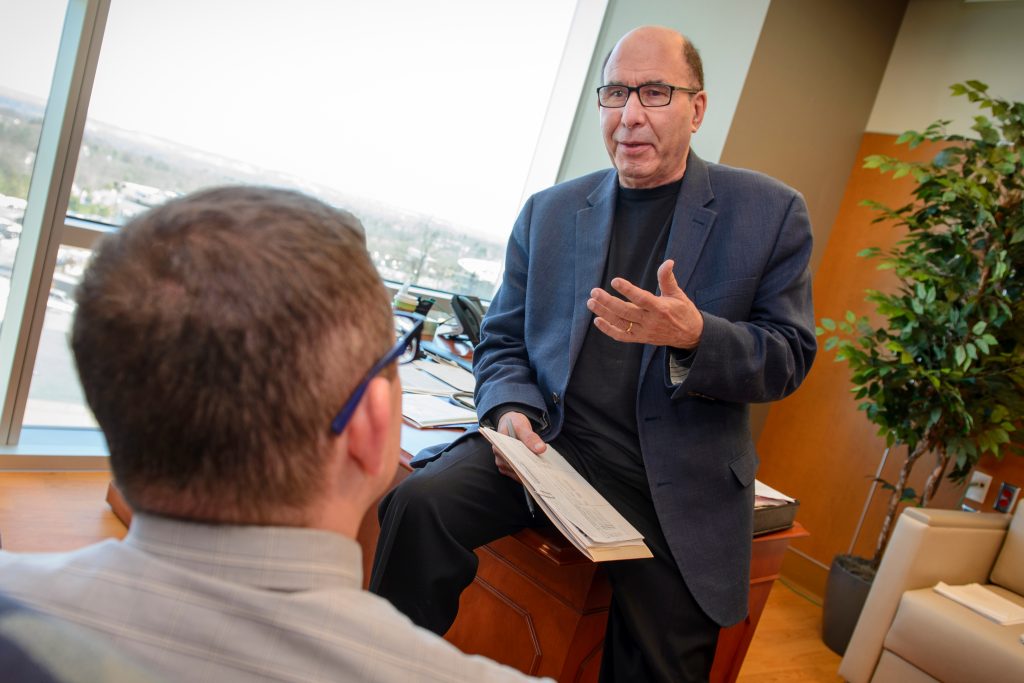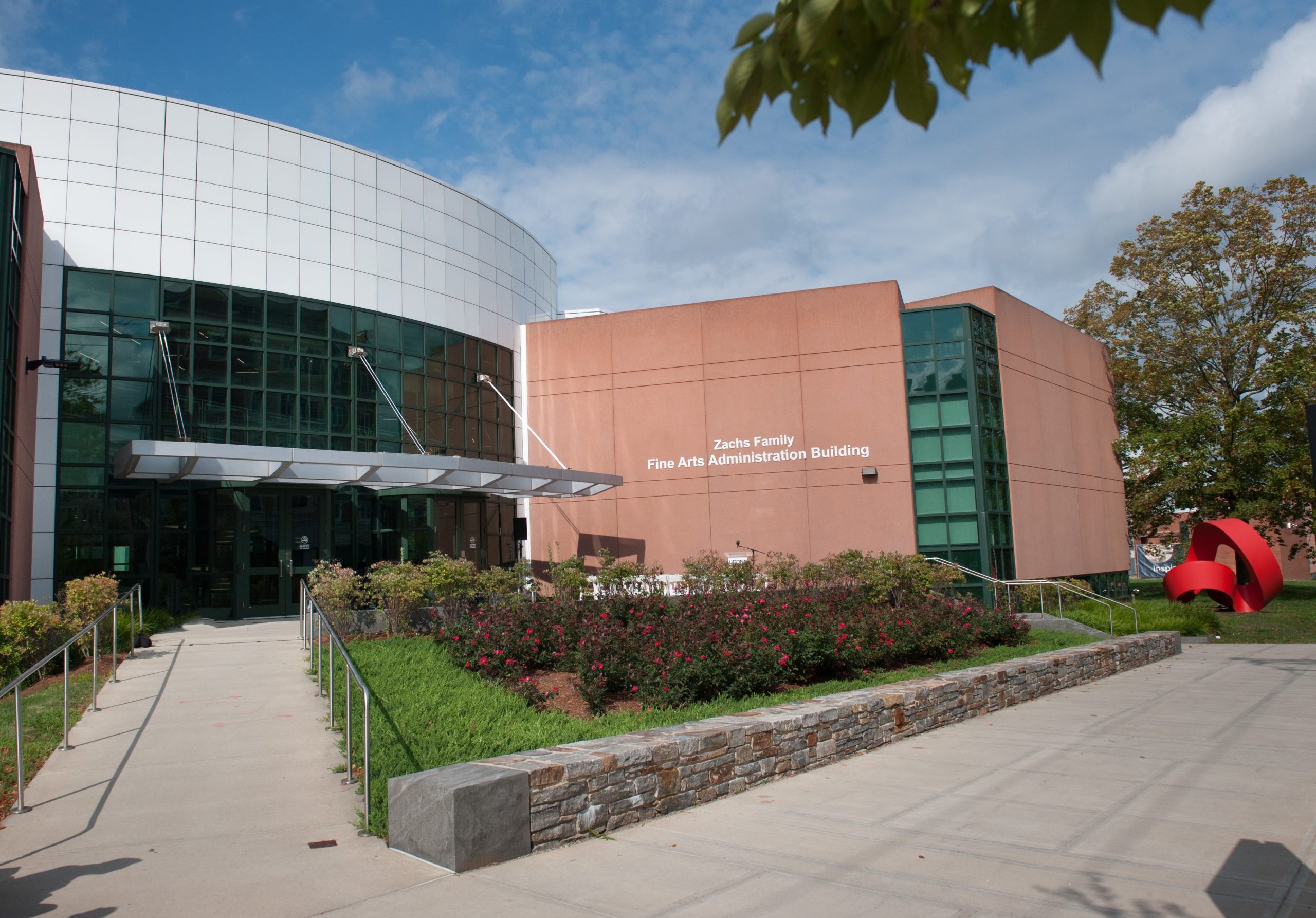When it comes to preventing colorectal cancer, there’s a whole lot more to it than colonoscopy.
The understanding of how this cancer and the polyps that come before it develop is changing rapidly, says Dr. Joel Levine, co-founding director of UConn Health’s Colon Cancer Prevention Program.
That’s not to say the colonoscopy is no longer an important test. In fact, quite the opposite – it’s become more of the starting point from which Levine’s program derives a larger screening and prevention plan.

Advances in the interpretation of the colonoscopy’s clinical findings are part of it. Combine that with an ultrasensitive blood stool test, and a targeted focus on the reduction of risk factors.
“The modifiable risk factors that we identify in this program, and reduce in a number of ways, reflect the translation of what’s new in science to what we apply to the thousands of people we follow clinically,” Levine says. “The key is the interaction of three broad areas: insulin biology, inflammation biology, and the billions of species of bacteria in the colon, the microbiome.”
Insulin biology refers to anything that increases insulin levels, insulin-related proteins, or insulin resistance. These are risk factors, such as diabetes, being overweight, and lack of exercise, that often are referred to collectively as metabolic syndrome.
Second is cellular inflammation. It’s a process that is not really visible to the patient, and this carries its own set of problems.
“If there’s a lot of inflammatory signaling, sooner or later there’s damage to genes, to DNA, to other elements in the cell,” Levine says. “There are greater numbers of mutations, and sooner or later those mutations take hold and colon polyps develop, with their own natural history.”
Inflammation often is a sign of a shift in the bacteria in the colon.
“That change in pattern induces a recognition on the part of the sensing cells in the colon, and the previously tolerant immune inflammatory pathways become intolerant, and the inflammatory activity markedly increases,” Levine says.
He notes that changes in the microbiome are associated with specific outcomes, including colon cancer: “You can associate specific patterns of bacterial change among the billions of species and the risk for colon cancer. Further evidence has demonstrated a relationship between specific bacteria and specific molecular pathways for colon polyps.”
Polyp Predictors
The colonoscopy recognizes most polyps. But a recognition of inflammation and bacterial changes can reveal warning signs before the polyps form. And knowledge of the lifestyle choices associated with metabolic syndrome could alter a would-be colon cancer patient’s path altogether.
“Dr. Ethan Bortniker is very active in this area of risk,” Levine says. “He is an expert at understanding how things integrate.”
Bortniker is director of colorectal cancer research at UConn Health. He is involved in several studies trying to identify the relationship between elements of lifestyle reflected in the metabolic syndrome. In one of them, he uses an imaging device to measure liver fat as a direct predictor of the development of colon polyps.
We have not seen a colon cancer in any of the patients we follow in this risk-identification, risk-reduction pathway over at least the past five years. — Dr. Joel Levine
“Our Colon Cancer Prevention Program is designed to identify risk, and modulate risk,” Levine says. “The first colonoscopy tells you how that risk is being expressed. And the more we know about the biology of the colon and the biology of polyp and cancer formation, the more we can interdict the process.”
While the colonoscopy is important, so are the efforts to lower patients’ risk profile between colonoscopies. The results are quantifiable.
“We have not seen a colon cancer in any of the patients we follow in this risk-identification, risk-reduction pathway over at least the past five years,” Levine says. “We think if you apply current biology, you will impact substantially the generally slow-growing, slow-developing process of colon polyps and cancer. In normal circumstances, that’s a six- to 10-year interval for polyps to develop, and therefore if you follow people carefully and regularly over time, you can stay ahead of the curve.”
Contributing to the Colon Cancer Prevention Program’s success, Levine says, is that patients are taking an active role in their well-being. The no-show rate, historically high in the world of colonoscopy, is very low in his program.
“People are so invested in this program,” Levine says. “It really is a model in service and detail. Rather than sitting in an exam room, wearing a johnny, uncomfortable and in a hurry to leave, the patients sit here in my office. They become integrated in what we do. They become very fastidious and very loyal. We explain it, and they go back and they say, ‘Wow, this is old-fashioned medicine in a new-fashioned way.’ And it works. Everybody gets with the program.”
Examining Blood Protein
To get a better handle on changes at the molecular level in between colonoscopies, UConn Health uses a souped-up version of the fecal immunochemical test (FIT). It measures the protein in blood in the stool in billionths of a gram. Levine says there are maybe a half-dozen other places in the country that do that.
“We follow this not just as a screening test for colon cancer, but as an interval test in the years between colonoscopies to try to identify earlier when polyps may reappear,” he says. “The reason this is so important is that the alternate pathway – not the adenoma pathway which we thought was the only one in the past – doesn’t always obey the rules with regard to how fast polyps will appear. What the risk factors are in a given polyp may suggest that there is a higher risk for malignant transformation.”
Levine notes that his program recently reported to the American College of Gastroenterology its first findings on looking at 1,000 patients and seeing the value of detecting a positive FIT test when used in the interval way.
Further study of this supersensitive FIT may yield data that could lead to non-colonoscopic screening becoming more prominent.
“Colonoscopy has a real value,” Levine says. “The value for us is, what does it tell us about individual risk and how do you go forward in lowering the risk? And what is increasingly clear is that the molecular profiling of different polyp pathways is really going to be key, and the linking of that to things like the microbiome change will be very informative. So it’s going to be ‘colonoscopy plus,’ and then there are going to be subsets of people who do not need to be followed by colonoscopy.
“There are going to be a lot of noninvasive ways in the future, in low-risk people, just to make sure that nature is not being capricious.”



